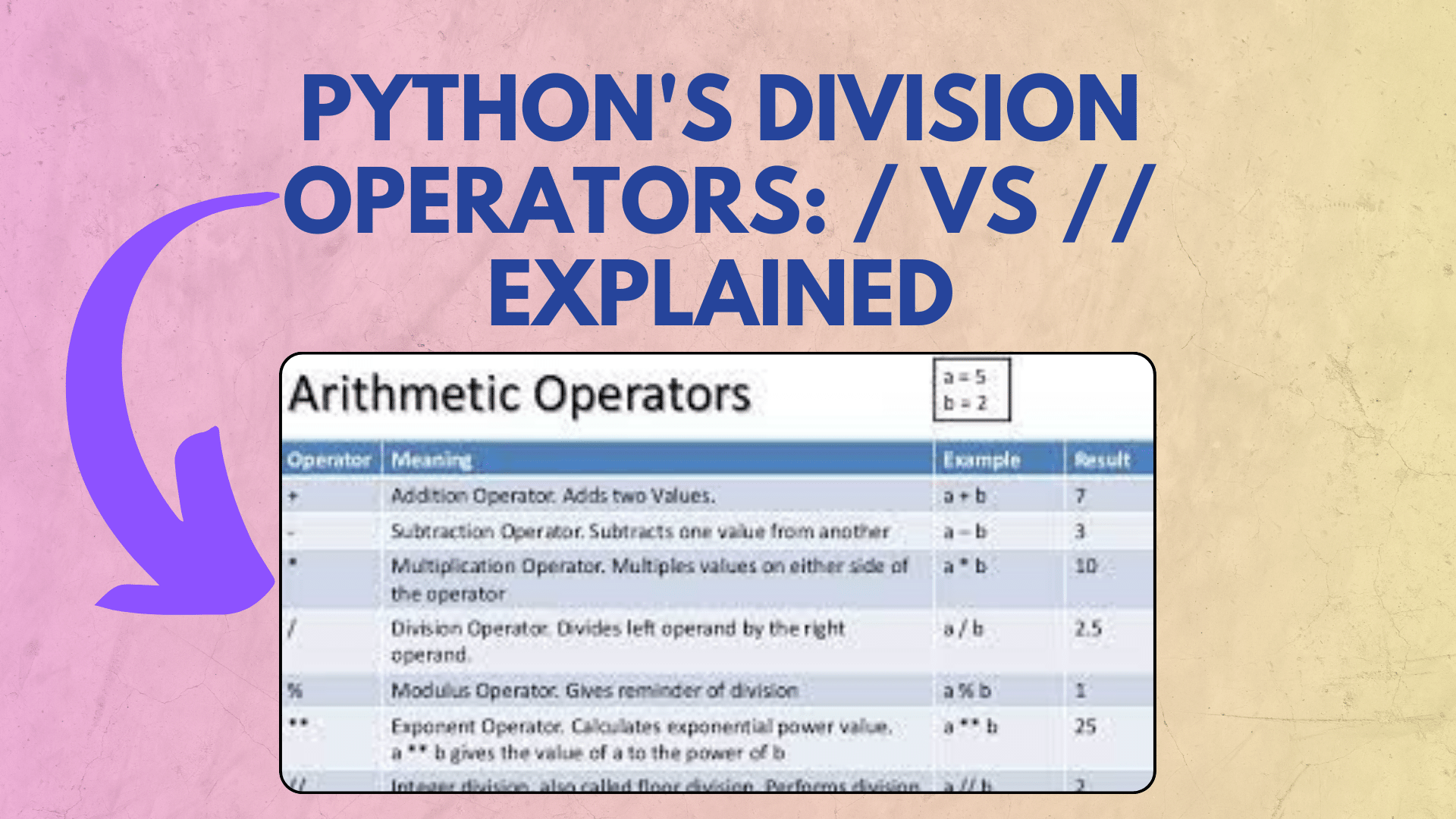
Python’s Division Operators: / vs // Explained
In Python, the division operator / and the floor division operator // serve different purposes, and it’s important to understand when to use each. Let’s delve into the details and explore the differences between these operators.
Division Operator /
The division operator / performs regular division and can produce floating-point results. For example, consider the following code in Python 3.x:
result = 5 / 2
print(result) # Output: 2.5
In this case, the result is a floating-point value because one or both operands are of type float. However, if you use only integer operands, you might not always get the expected result:
You Might Like This :
- How to Handle the Error: No Supervisorctl Section in .ini File
- How to Run a Python Script with a .bat File
- Expressing Whole Numbe
- Python3 pip Tutorial: Installing the ‘requests’ Library
result = 5 / 2
print(result) # Output: 2.5
Python 2.x exhibits similar behavior when it comes to integer division with the / operator.
Floor Division Operator //
The floor division operator // is used to perform integer division. It returns the largest integer that is less than or equal to the result of the division. Let’s see how it works:
result = 5 // 2
print(result) # Output: 2
In this case, the result is an integer, and any fractional part is truncated. This operator is particularly useful when you need integer results, regardless of the operand types:
result = 7.0 // 3.0
print(result) # Output: 2.0
Even with floating-point operands, the // operator produces an integer result, making it useful for scenarios where you want to ensure that the result is an integer.
Historical Context
In Python 2.x, the behavior of the division operator / is different from that in Python 3.x. In Python 2.x, / performs integer division for integer operands, whereas in Python 3.x, it always produces floating-point results. To emulate Python 3.x division behavior in Python 2.x, you can use the from __future__ import division statement.
Use Cases
- Use the
/operator when you want floating-point division and need precise results, especially when dealing with non-integer values. - Use the
//operator when you require integer division and want the result to be truncated towards zero.
In summary, Python’s division operators / and // serve different purposes, with / producing floating-point results and // providing integer results. Understanding when to use each operator is essential for accurate and efficient computation in your Python programs.


[…] Python’s Division Operators: / vs // Explained […]
[…] Python’s Division Operators: / vs // Explained […]
[…] Python’s Division Operators: / vs // Explained […]